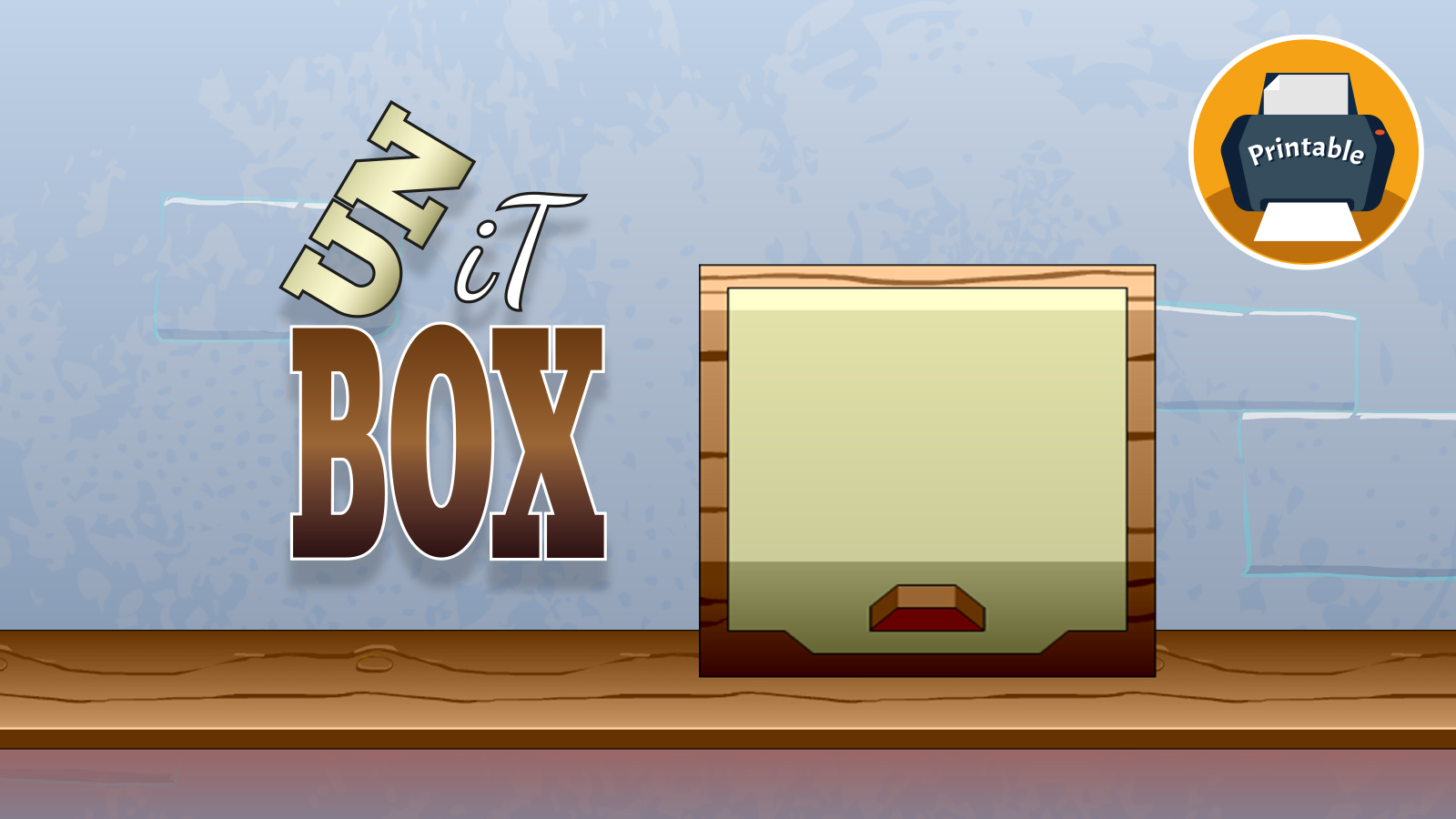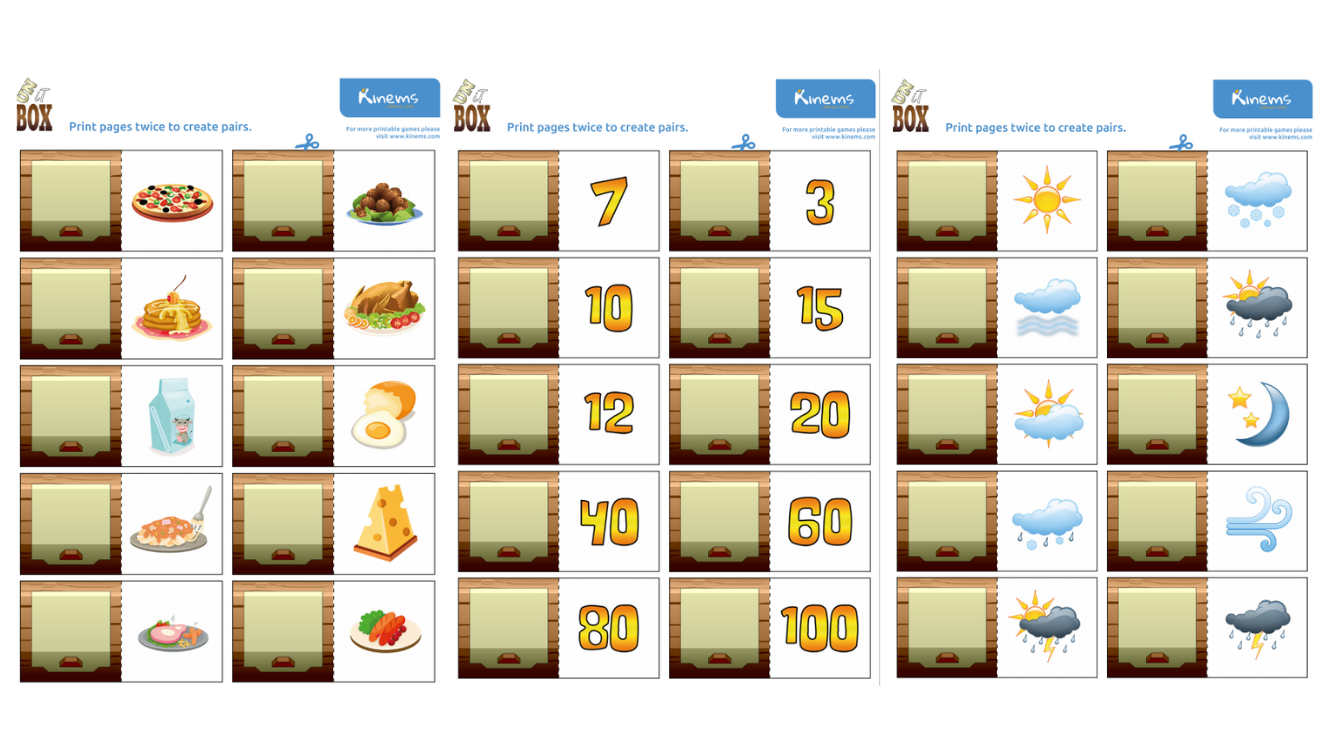Educational Board Game for Visual Working Memory | UnBoxiT

UnBoxiT provides practice in short term memory and vocabulary. This is a great material for remote learning with your students! Download the PDF and email it to parents to use with their children at home or print it out and send them a hard copy.

Preparation
- Select and print the pages that you want to use. Remember that you have to print the pages 4-8 twice - these are the ones with the boxes and images of the objects
- Use a scissor to cut the page with the storage folder
- Fold and glue stick the folder in which you store all the game pieces.
- Cut the boxes with the objects next to them as one item
- Take the box with the object next to it and fold it in the middle along the dotted line
- Use a glue stick to glue the two sides together - or scotch tape to make it two sided
- Turn over the objects and arrange the pairs randomly in rows and columns - determine how many to play with based on the child. Use six or nine matches until your child learns the game and then make it more difficult with more matches.
- Use the folder to save your little box cards.
How to play the game
Hide two of the cut objects under each of the boxes. Then ask the children to take turns to turn over the boxes at a time to try to make a match.
They must remember where they saw each object as they are uncovered until they finally make a match. Play with each set of items.
To develop vocabulary, have the children say the name of each item as they turn them over.

Useful Tip!
Here is another fun memory game!
You will need a tray or a placemat, several small items like a toy car or block, spoon, can of soup, pen, cup, etc. You will also need a towel in order to cover these items. Assemble them ahead leaving space between them. Start with four items which can be increased to make the game harder. Cover the items and then ask the children to tell you what was there. If they have difficulty, show the items again for 10 seconds and ask again. This game can be made more challenging by doing it again with more and different items.
Children are developing visual memory and vocabulary skills in this experience.
To turn this around, parents can have the children assemble items and hide them so they have to look and remember what they hid from them!